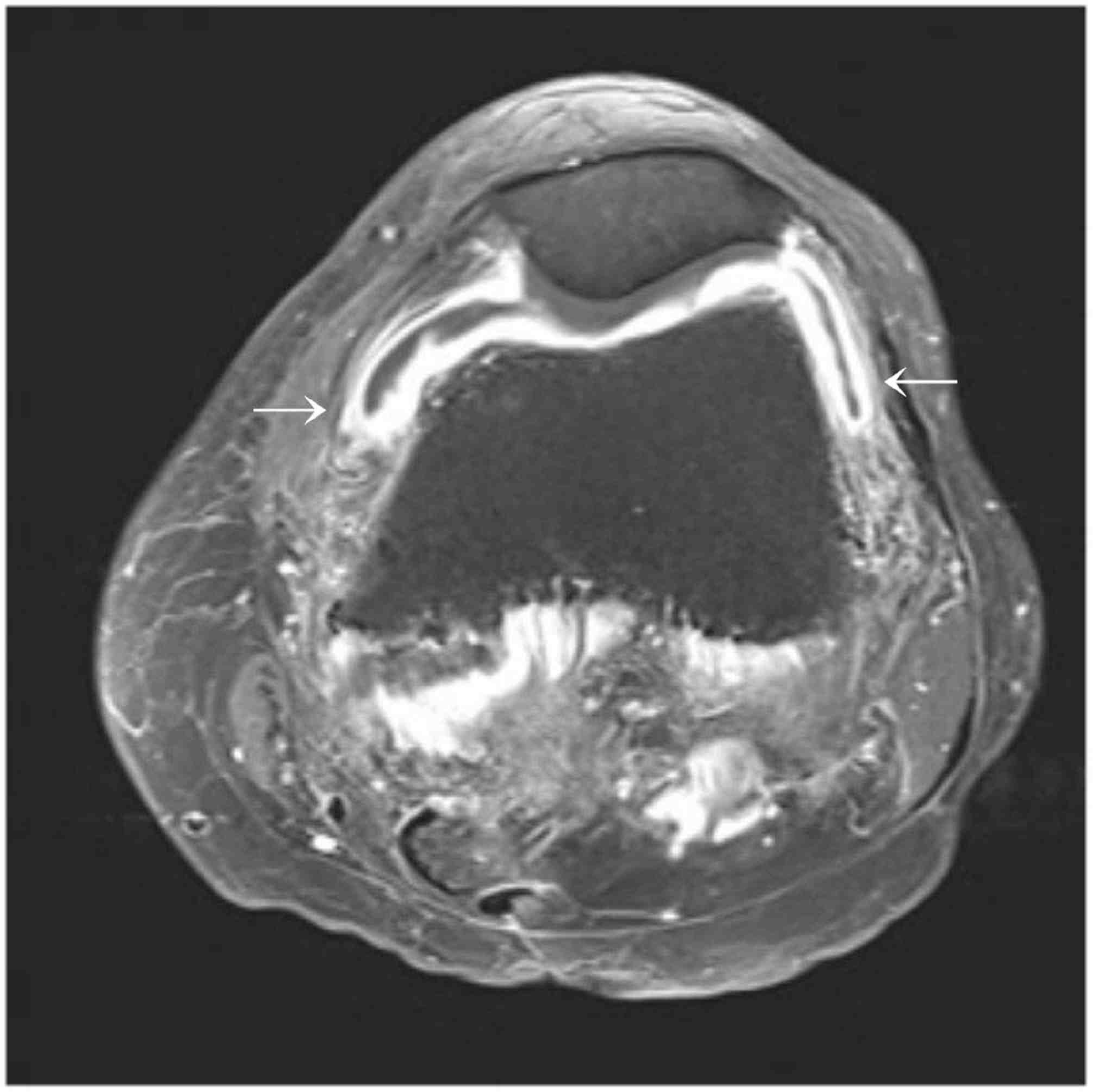Abstract
Septic arthritis is the infection of a joint by an infectious agent, leading to arthritis. It is therefore important to identify and treat the correct bacteria in septic arthritis. However, accurate identification of bacteria by conventional methods is difficult because of the distinct biochemical characteristics of individual bacteria. This case report aims at assessing septic arthritis caused by Streptococcus dysgalactiaesubsp. equisimilis(SDSE) using nucleotide sequences and discusses the associated treatment. Here, Streptococcus agalactiaewas determined to be the causative bacteria for septic arthritis in a 77 year-old woman using the conventional method of hemolysis pattern interpretation and morphology. However, nucleotide sequence analysis of 16S ribosomal RNA revealed that SDSE was the causative strain. 16S rRNA gene sequencing can correctly identify bacteria strains that are difficult to be identified by traditional method, and this correct identification can provide patients with the opportunity for adequate treatment using the proper antibiotics.
References
1. Margaretten ME, Kohlwes J, Moore D, Bent S. Does this adult patient have septic arthritis? JAMA. 2007; 297:1478–88.
2. Gupta MN, Sturrock RD, Field M. A prospective 2-year study of 75 patients with adult-onset septic arthritis. Rheumatology (Oxford). 2001; 40:24–30.

3. Moser C, Andresen K, Kjerulf A, Salamon S, Kemp M, Christensen JJ. Infective Arthritis: Bacterial 23S rRNA Gene Sequencing as a Supplementary Diagnostic Method. Open Microbiol J. 2008; 2:85–8.

4. Adderson EE, Boudreaux JW, Cummings JR, Pounds S, Wilson DA, Procop GW, et al. Identification of clinical coryneform bacterial isolates: comparison of biochemical methods and sequence analysis of 16S rRNA and rpoB genes. J Clin Microbiol. 2008; 46:921–7.
5. Korean Society for Chemotherapy, Korean Society of Infectious Diseases, Korean Orthopaedic Association. Clinical guidelines for the antimicrobial treatment of bone and joint infections in Korea. Infect Chemother. 2014; 46:125–38.




 PDF
PDF ePub
ePub Citation
Citation Print
Print



 XML Download
XML Download